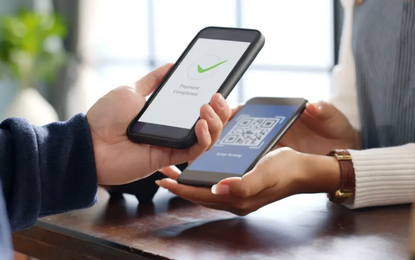

It’s well known that women don’t have the same access to financial services as men. And sadly, the already considerable gender gap was only exacerbated by the pandemic. We’re facing a regression of more than a decade in terms of female economic participation. Even before 2020, women made up 56% of the world's unbanked population, according to the World Bank. When we talk about banking inclusion, we can’t ignore the issue of employment because the two concepts are closely linked. Today, participation in the global workforce stands at 47% for women versus 72% in men, according to the International Labour Organization (ILO). That disparity can be explained by the difficulties of balancing work and family life—something that worsened with lockdowns—as well as the pressure to fulfill caregiver roles and the gender pay gap. Digital finance can and should contribute to the reduction of this rift by offering products that allow women to be included in the system and improve their financial standing. Financial inclusion alone will not generate the much sought-after gender equity. But only with equal access to the full range of financial services and products (savings, credit, insurance, payments), accompanied by education, will women have an opportunity for social and economic empowerment. Improving conditions for women also has an impact on the rest of society. Having financial stability and independence and becoming less vulnerable to abuse and economic inequality boosts their overall social well-being and can contribute substantially to global productivity.
Digital finance demonstrated its ability to provide economic benefits to vulnerable populations in the midst of the pandemic, bringing services to millions of hitherto unbanked or underbanked people, meaning those who were unaware that they had an account or barely used it. In this sense, the benefits of digital transformation (ease of access, digital onboarding, 24/7 availability, and a simple and instinctive user experience) can have an impact on women who require specific products for their realities. Microcredit stands out in this context as it has proven to be a trigger for entrepreneurship, especially in emerging economies. Men have greater access to credit even though women constitute a large sector of the economy. A clear example of this is that, 70% of companies run by women in Latin America that apply for credit don’t receive it, according to the Inter-American Development Bank (IDB). So, aren't women "financially viable" for lenders? On the contrary. They tend to have higher repayment rates. Considering all these aspects, the personalization of the digital offering will be fundamental for acquiring new customers. And the size of the loans, repayment terms and the possibility of providing accompanying financial advice must be taken into account. Access to microcredit gives women autonomy by opening the door to economic activities with which they can support themselves without being dependent on another person. In this sense, financial institutions have a great opportunity to help narrow the gender gap and access a new sector of the market.
Access to inclusive insurance plays an important role in reducing the gender gap. While some institutions offer products made to measure, with specialized coverage in diagnosis, treatment, and compensation for diseases related to female anatomy, such as breast cancer, there is still much to be done. For example, only 23% of the insured population in Mexico are women, according to official statistics. Insurance helps finance expenses related to ill health and unforeseen events, thereby reducing economic uncertainty. Therefore, women who aren’t insured are more inclined to use informal loans or sell belongings when such events occur. It’s certainly true that this can affect anyone regardless of their gender. But as we’ve already seen, women are more prone to economic vulnerability because of their lower participation in the formal labor market and because they have lower-paid jobs, despite performing similar tasks to their male peers. Digital insurance is an option for covering specific needs, using data mining tools to personalize services because women are not a homogeneous population. Their realities vary according to their income, age or economic context, while the stage of life in which they find themselves—marriage, motherhood, divorce—also has an influence. According to the SheForShield study by the International Finance Corporation, digital distribution channels are an ally for insurers and banks that need to increase awareness and communication with customers who prefer time-saving virtual services while managing their busy family and professional agendas. Similarly, having a savings instrument helps manage risks related to health, personal finances and investments and can boost female economic participation in the household. Globally, however, women are 9% less likely than men to have an account or use mobile banking, and the gap is even greater in lower-income countries, according to World Bank data. The figures are overwhelming and the challenge is clear: it’s important to continue innovating in digital services to make them accessible, easy to use and geared to the realities of the female population. It’s the only way to move towards a more inclusive and sustainable financial industry.
Join our online community and stay up to date with the latest news from the world of technology.